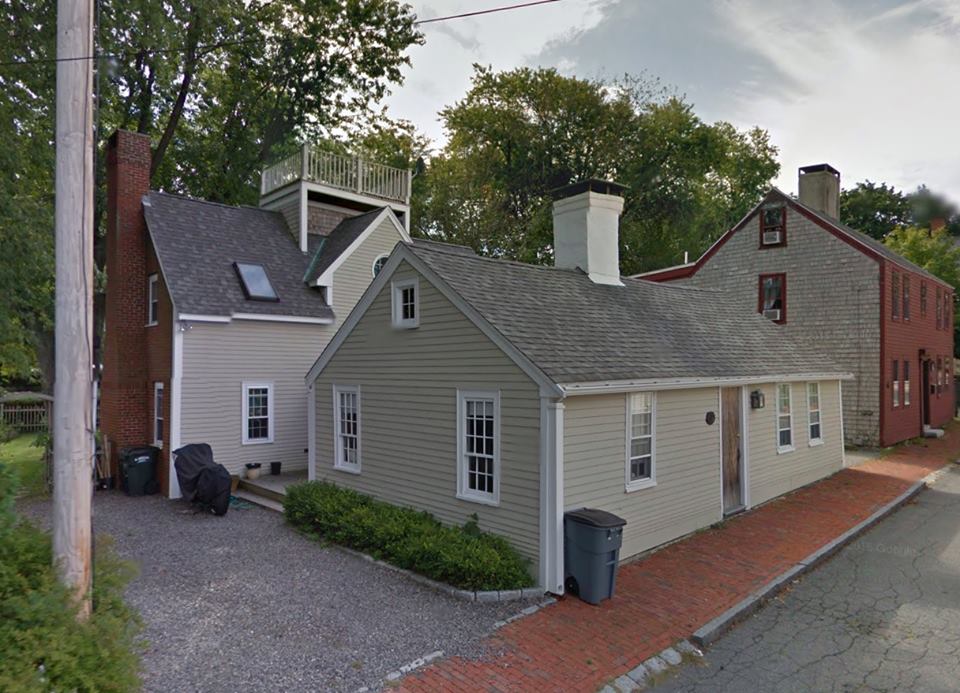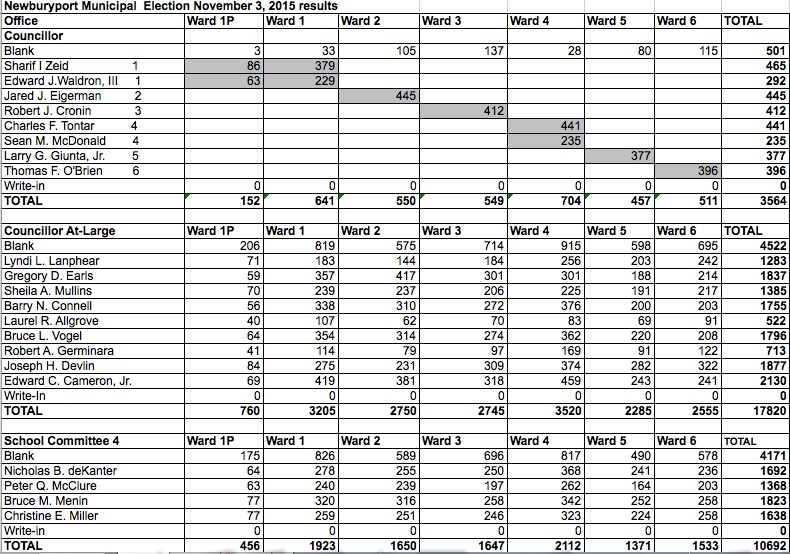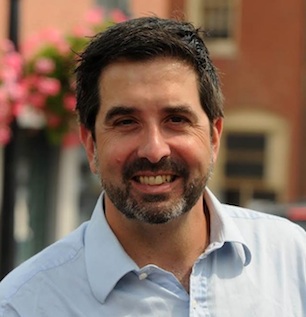Be sure to VOTE!!
Election Day:
Tuesday, November 3, 2015
Ward 1
Edward Waldron III
Sharif Zeid
Ward 1 has two very bright men running for Newburyport City Council, both love their city, both are willing to step up and serve Ward 1. They have different styles, and differing views on some of the issues. After the Ward 1 primary “Meet and Greet” it was my impression that it was Sharif Zeid’s race to lose. However, Ted Waldron has been working very hard. I will be very interested to see who the good people of Ward 1 choose to elect on November 3, 2015.
Ward 4
Charles Tontar
Sean McDonald
I cannot imagine why the folks in Ward 4 would not re-elect Charlie Tontar. Charlie works hard, shows up, pays attention, communicates with his constituents, is accessible (he holds his “office hours” for anyone who wants to talk to him, every Saturday at Riverside Cafe), understands budgets, and really wrestles with issues before he votes on them.
Sean McDonald has a different view of some of the issues before the city. Sean has started to blog, and whether he wins or loses, I hope that he continues.
Newburyport Candidates-at-Large
Instead of endorsing anyone, I’m going to take the unusual route and talk about why I am NOT voting for 3 of the candidates and why.
A) Robert Germinara
When I went looking for a website for Mr. Germinara, I discovered that he had been arrested for assault. I’m not going to link to the information, I think the Mr. Gerninara and his family have enough to deal with. Civility and an ability to have a dialogue (see an earlier entry) are important to me in a City Councilor.
B) Lyndi Lanphear
Ms Lanphear called me a Nazi (you bet I have a hard copy of that comment). Civility and dialogue are big on my list for City Councilor.
Ms Lanphear also made this unfortunate post on a Facebook page forum:
Lyndi Lanphear: “Fyi. Do you know that a big section of lower merrimac st is without water and apparently has been since yesterday. They called the city to complain but no one’s going to fix it until tomorrow. So much for our excellent infrastructure that can support 500-600 new apartments! Fix what we have first !”
Ed Cameron, who has is also running for City Council replied in a calm and constructive manner with all the facts.
Ed Cameron: “My understanding in talking to the City’s DPS is that there was a water break late Friday night on Merrimac Street. The break was fixed, service was restored with the exception of one household which requires more extensive repair from the City’s water main to their house. That household now is using water fed from a hydrant so they do have some water service. The more complete repair will take place tomorrow.”
(Yes, Ed Cameron definitely has my vote.)
Constructive dialogue and getting the facts right are very big on my list.
C) Laurel Allgrove
I cannot find anything out about Laurel Allgrove. In this day and age I think that it is vital to either have a Facebook page or a website as a way to communicate with your possible future constituents. Again, dialogue and in this case information is important for me as a City Councilor.
Here are the rest of the Newburyport City Councilors-at-Large who are candidates. On November 3, 2015 Newburyport citizens will be voting for 5 seats.
Ed Cameron, 17 Oakland St, Incumbent
Barry Connell, 36 Woodland St, Incumbent
Greg Earls, 25 Milk St, former City Councilor and mayoral candidate
Sheila Mullins, 7 Parsons St
Bruce Vogel, 90 Bromfield St, Incumbent
Joseph Devlin, 3 Dexter Lane
Here is a list of all the candidates running for City Council and Newburyport School Committee with either their website and or Facebook page.
Here is a link to a list of video interviews of all but 2 of the Newburyport City Councilors that are running, both in Ward races and At-Large races. The videos have been produced by Citizens for Environmental Balance (CEB) and they are very informative.
And here is a link to the Newburyport City Councilor-at-Large debate held on October 20, 2015. The sponsers were The Daily News of Newburyport, the Greater Newburyport Chamber of Commerce, WNBP radio, and Port Media.
Newburyport Local Pulse podcast with all 9 Newburyport City Councilors-at-Large.
WHERE TO VOTE on November 3, 2015

Where to Vote
Voting is a privilege, we are so lucky to be able to vote. And these candidates, all of them, have done the difficult thing by showing up, and all of them are willing to serve this wonderful city. They all deserve the dignity of people getting out to vote.
And if you do not know where to vote, there is a very cool tool to find out where to vote in Newburyport, Tuesday, November 3, 2015.
You just enter your street number, the street’s name, and your city or town, or your zip code, and it tells you exactly where to go (it even tells you which ward you are in, and how to get in touch with the City Clerk). It can be found here.
Ward 1 — Methodist Church, 64 Purchase Street
Ward 1 Plum Island — Plum Island Boat House, 300 Northern Boulevard, Plum Island
Ward 2 — Brown School, 40 Milk Street
Wards 3 and 4 — Hope Church, 11 Hale Street
Wards 5 and 6 — The new Senior Community Center, 331 High Street (In the past, these wards voted at the Bresnahan Elementary School.)
_____________________________________________________________________
The Order for the Newburyport City Council-at-Large candidates as they will be on the ballot.
Councillor-at-Large 2 YEAR TERM
(9 CANDIDATES FOR 5 SEATS…IN ORDER ON THE BALLOT)
Lyndi L. Lanphear
Gregory D. Earls
Sheila A. Mullins
Barry N. Connell (Candidate for Re-Election)
Laurel R. Allgrove
Bruce L. Vogel (Candidate for Re-Election)
Robert A. Germinara
Joseph H. Devlin
Edward C. Cameron, Jr. (Candidate for Re-Election)

The Absentee Ballot which looks like the November 3, 2015 ballot
The Newburyport Absentee Ballot which looks like the November 3, 2015 ballot. This is the Ward 5 ballot, all the ward ballots will look different.




































